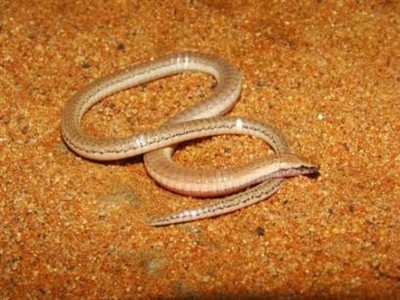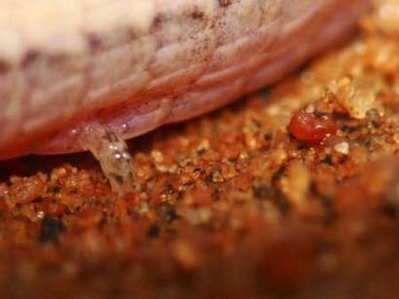Twitch has posted the complete opening sequence to Zero Trooper F, the Wisconsin Tokusatsu movie we reported on earlier.
Keep up with news on Zero Trooper F
Thanks to Avery!
Twitch has posted the complete opening sequence to Zero Trooper F, the Wisconsin Tokusatsu movie we reported on earlier.
Keep up with news on Zero Trooper F
Thanks to Avery!

1997![]()

Directed by Shun Mizutani

Hey, has this ever happened to you? Watching TV to discover your favorite show is only three minutes long? And the show is aired every day broken up into story arcs? Well, just do what millions are doing, and watch Godzilla Island on DVD! Yes, thanks to Toho Studios getting off their lazy butts, Godzilla Island is now on R2 DVD with no subtitles! In this convenient digital form, it is easy to follow the story arcs of all 256 episodes without waiting a whole 24 hours between three-minute moments of joy. And TarsTarkas.NET is committed to give you the skinny of every episode and every story arc! March of Godzilla Island began with Story Arc 1 and continues now with Story Arc 11. And we aren’t even halfway done yet! Get to reading, because when we’re done we will have really accomplished something here. Unless you don’t like Godzilla Island, then it doesn’t matter. So read on!


|

Podcast: Play in new window | Download
Those lovable Gremlins, who love to cause mayhem and mischief, are back, but not in the long-rumored Gremlins 3. Instead, they are in a commercial for an IT company! But these are old-school Gremlins, not some lame CGI garbage, so it’s all good! Enjoy the commercial, because it will probably be the only Gremlins we get for another five years.
Commercial Link
Godman Toho monster cameos: Gaira, Sanda, Gorosaurus, Gabara, Kamoebas, and the Bat People from Latitude Zero
It was 26 episodes broken into 5 minute chunks and airing October 5th, 1972 to April 10th, 1973, later replaced by Yuke! Greenman who had pretty much the same plot and some repeat monsters.
Greenman Toho monster cameos: Gaira, Gabara, Sanda, King Kong (called Gorilla), and Minya
DVDs of select Greenman/Godman episodes hits later this month in Japan, which is helpful since it is hard to find online. Unfortunately it is not every episode, so we must continue to wait to get them all.
SciFi Japan is reporting that the DVD set will include a preview of New Godman Production (Shinsaku Goddoman), which will involve the new adventures of Godman beating the crap out of random monsters.
Godzilla vs Megaguirus, Godzilla X Mechagodzilla, and Tokyo SOS director Masaaki Tezuka is in charge of the project.



And I’m definitely not using the legs from this lizard and the lungs from this frog to make some sort of supermonster. So don’t get any ideas. But stay away from the Seattle sewers for a few years.
Legless lizard found in Brazil may be new species
By Alister Doyle, Environment Correspondent Tue Apr 29, 12:17 PM ET
OSLO (Reuters) – Scientists have discovered a legless lizard, a toad and a dwarf woodpecker among 14 species believed to be new to science in central Brazil, a wildlife conservation group said on Tuesday.
A four-week expedition to the Cerrado region, a wooded savannah under threat from the expansion of farming, found eight apparently unknown types of fish, three reptiles, one amphibian, a mammal and a bird, Conservation International said.
“The lizard, of the Bachia genus, resembles a snake due to its lack of legs and pointed snout, which help it move across the predominantly sandy soil,” U.S.-based Conservation International, a non-profit group, said in a statement.
Susan Bruce, a spokeswoman for Conservation International, said the lizard was about 15-20 cm (6-8 inches) long. Other legless lizards around the world include ones related to geckos in Australia or slow worms in Europe.
The lizard was found during the expedition to the Serra Geral do Tocantins Ecological Station, a 716,000 hectare (1.77 million acre) protected area in the Cerrado.
Other suspected new species include a dwarf woodpecker and horned toad. Conservation International seeks to preserve biodiversity and argues that human societies can live in harmony with nature.
“Protected areas such as the Ecological Station are home to some of the last remaining healthy ecosystems in a region increasingly threatened by urban growth and mechanized agriculture,” said expedition leader Cristiano Nogueira.
The Cerrado region, part of Brazil’s central high plains region that once covered an area half the size of Europe, is being converted to crops and ranch land at twice the rate of the nearby Amazon rainforest, Conservation International said.
The expedition also recorded threatened species such as the three-banded armadillo, the marsh deer and hyacinth macaw among more than 440 species documented in the expedition comprising 26 researchers. — (Editing by Giles Elgood)
Starfish Outbreak Threatens Corals
ScienceDaily (Jan. 18, 2008) — Outbreaks of the notorious crown of thorns starfish now threaten the “coral triangle,” the richest center of coral reef biodiversity on Earth, according to recent surveys by the Bronx Zoo-based Wildlife Conservation Society and ARC Centre of Excellence for Coral Reef Studies.
The starfish — a predator that feeds on corals by spreading its stomach over them and using digestive enzymes to liquefy tissue — were discovered in large numbers by the researchers in reefs in Halmahera, Indonesia, at the heart of the Coral Triangle, which lies between Indonesia, Malaysia, the Philippines, Papua New Guinea and the Solomon Islands. It is considered the genetic fountainhead for coral diversity found on Australia’s Great Barrier Reef, Ningaloo and other reefs in the region.
Scientists fear the outbreak is caused by poor water quality and could be an early warning of widespread reef decline.
Recent surveys of Halmahera by the Wildlife Conservation Society and ARC Centre of Excellence for Coral Reef Studies confirmed that while Halmahera’s reefs are still 30-50 percent richer than nearby reefs, some areas were almost completely destroyed.
“The main cause of damage to the corals was the Crown of Thorns Starfish,” Dr. Andrew Baird of the ARC Centre of Excellence for Coral Reef Studies and James Cook University. “We witnessed a number of active outbreaks of this coral predator. There was little to suggest that the reefs have been much affected by climate change as yet: the threats appear far more localized.”
The team also saw first-hand evidence of recent blast-fishing, an extremely destructive fishing practice that uses explosives. According to locals this accompanied a break down of law and order following communal violence in 2000-2003. During the same time many reef lagoons were mined of their corals for use in construction, an activity encouraged by the Indonesian military.
“This is clearly a complex human environment and effective management of the marine resources must address the needs of communities. It will also be vitally important to understand the causes of conflict among communities and address them,” says Dr Stuart Campbell, Program Leader for the Wildlife Conservation Society’s’ Marine Program in Indonesia.
The researchers pointed out that there were still healthy populations of certain species — and still time to reverse the damage.
“The good news is that the reef fish assemblages are still in very good shape” said Tasrif Kartawijaya from WCS-IP. “We saw Napoleon wrasse and bumphead parrot fish at almost every site. So these reefs have the capacity to recover if we can address the current threats.”
The Coral Triangle Initiative (CTI) announced by six regional governments at the Bali Climate Change Conference recently offers hope for the reefs in the region, the researchers say. However, there are few details of how it will work and no mention of the fundamental role of research in the conservation program.
“We are disappointed research is yet to be fully considered in the CTI. The success of large marine parks, like the Great Barrier Reef Marine Park, is largely due to the primary role of science plays in understanding what’s going on, so managers can make good decisions,” said Dr Baird.
“It isn’t enough just to document the diversity of the region. Large scale research is required to understand the Coral Triangle ecosystems and work out how best to respond to threats such as poor water quality and overexploitation,” Dr Campbell added.
Adapted from materials provided by Wildlife Conservation Society, via EurekAlert!, a service of AAAS.